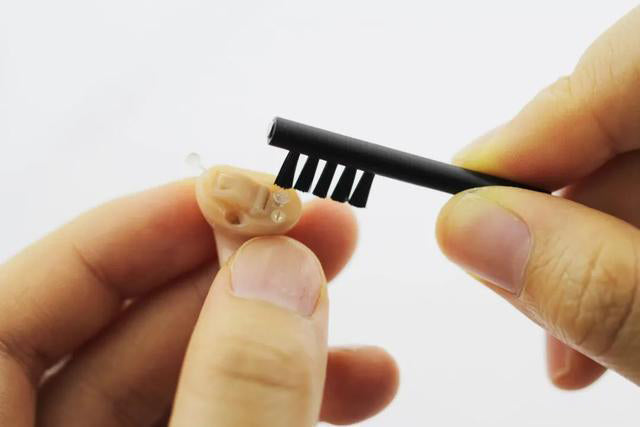To understand how hearing aids work, we need to first understand the different parts of the hearing aids and their functions There are four essential components of all hearing aids are Battery door, Microphones, Receivers, and Buttons.
understand the different parts of the hearing aids
Hearing aids battery door
This is where you would place the battery. With a functional battery in and close the battery door, the hearing aid will be turned on. Once the battery door is open the hearing aids will be turned off. Hence the battery door also functions as the on and off buttons for the hearing aids.
Rechargeable hearing aids: To turn rechargeable hearing aids on and off you would need to use the charger. With the hearing aids placed in the charger, the charger itself will turn off the hearing aids, and after you removed the hearing aids from the charger, the hearing aids will automatically turn themselves back on. To use the recharger to turn the hearing aids on and off you have to plug the charger into the outlet, to ensure that there are power sources running through the charger.
Microphones
The main function of the microphones is to pick up sounds from the environment, so sounds can be sent down and processed through the processing chips that are located inside of the body of the hearing aids.
Receivers
Another name for Receiver is Speaker. This is the part of the hearing aid that s the closest to the eardrum, and this is where the amplified sounds come out of the hearing aids. Typically speaking there will be a small filter by itself sitting on top of the receiver, or a filter and a rubber dome sitting on top of the receiver, depends on the style of the hearing aids
Hearing aids buttons
Buttons can function like volume control, or program changing button, or both. To determine the function(s) of the buttons, it will always be a discussion between you and your hearing health professionals.
As an overview, when sound in the environment gets picked up by the microphones it will get sent down and get processed by the processing chips that are located inside the body of the hearing aids and the amplified sound will get sent out by the receiver. Ultimately, the amplified sounds will reach up to the brain and we’ll perceive it at the part of the brain that’s responsible for hearing.
Maintenance for Hearing Aids
By understanding the various parts of the hearing aids, now we should also have a general idea about how to keep the hearing aids clean or how to troubleshoot our hearing aids.
Hearing adis battery maintenance
To keep the battery component in its best condition, you should ensure to store your hearing aids and batteries somewhere dry and avoid any moisture and/or water. Additionally, when you are not wearing the hearing aids, make sure that you remove the battery completely from the battery door to avoid any rusting of the battery which can cause further damage to the battery components.
Rechargeable Battery Hearing Aids: Like any hearing aids that utilize traditional batteries, do not place your hearing aids and hearing aid charger in the bathroom, next to the kitchen sink, by the coffee maker, or anywhere that is running a risk of moisture and water exposure.
Additionally, try to place your charger somewhere that’s not dusty. If your charger has a lid, always cover up the charger with the lid regardless of if you are using the charger or not to avoid any dust or debris getting down to the charging components. If the charger is dirty or dusty you can use a dry tissue or towel to whip it clean. Do not whip the charger or the hearing aids with something wet, not even alcohol whips.
keep microphones clean
To keep the hearing aid microphones clean, all you have to do is to use a little cleaning brush gently brush off all of the microphones on the hearing aids. When you are brushing off the microphones, sometimes you might even see little dust particles coming off the hearing aids.
How to take care of receivers
As a patient, there is not much that you can do regarding the receivers. Other than to ensure that the hearing aids and receivers are not getting wet, many patients like to pinch the receiver whenever they are removing the hearing aids from their ears. Whenever you pinch the receiver, make sure that you are pinching it gently. This is because the receiver can wear down over time, and if the receiver snapped or damaged, you would need to have to visit with your hearing care professionals to have it repair or change the receiver.
Domes and filters
Typically speaking your hearing aids would most likely either have both domes and filters, or just the filters, and both the domes and filters are sitting closely to the receivers, and the receiver is also the part that sits inside of our ears. Due to the nature of where the receiver, dome and filter sit, earwax and debris can cover them up.
If the domes and the filters cover up with earwax, even with the minimal amount of earwax, you might not perceive any benefits or minimal benefits from the hearing aids. Therefore, periodically you would need to whip down the domes or change the domes and/or filters whenever you’re running into issues with your hearing aids.
Follow up with your hearing health care provider for further instructions on how to change the domes and/or filters based on your hearing aid styles.

